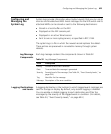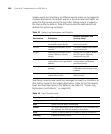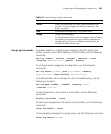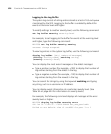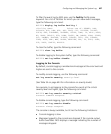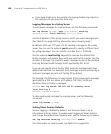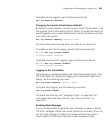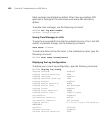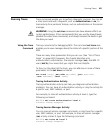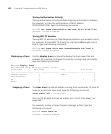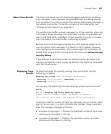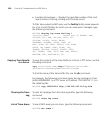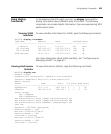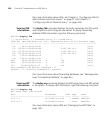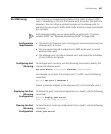
Running Traces 631
Running Traces Trace commands enable you to perform diagnostic routines. You can set
a trace command with a keyword, such as authentication or sm, to
trace activity for a particular feature, such as authentication or the session
manager.
WARNING: Using the set trace command can have adverse effects on
system performance. 3Com recommends that you use the lowest levels
possible for initial trace commands, and slowly increase the levels to get
the data you need.
Using the Trace
Command
Tracing is used only for debugging MSS. The command set trace area
enables you to view messages about the status of a specific portion of the
MSS.
There are many trace parameters that you can run. (See “List of Trace
Areas” on page 634.) However, this chapter describes only
authentication, authorization, the session manager (sm), and 802.1X
users (dot1x), four areas that you might find most helpful.
To focus on the object of the trace, you can add one or more of these
parameters to the set trace command:
set trace [area] [mac-addr mac-addr] [port port-num]
[user username] [level level]
Tracing Authentication Activity
Tracing authentication activity can help you diagnose authentication
problems. You can trace all authentication activity, or only the activity for
a specific user, MAC address, or port.
For example, to trace all authentication activity at level 4, type the
following command:
WX1200# set trace authentication level 4
success: change accepted.
Tracing Session Manager Activity
You can trace all session manager commands, or only those for a specific
user, MAC address, or port. For example, to trace all session manager
(sm) activity at level 3, type the following command:
WX1200# set trace sm level 3
success: change accepted.



